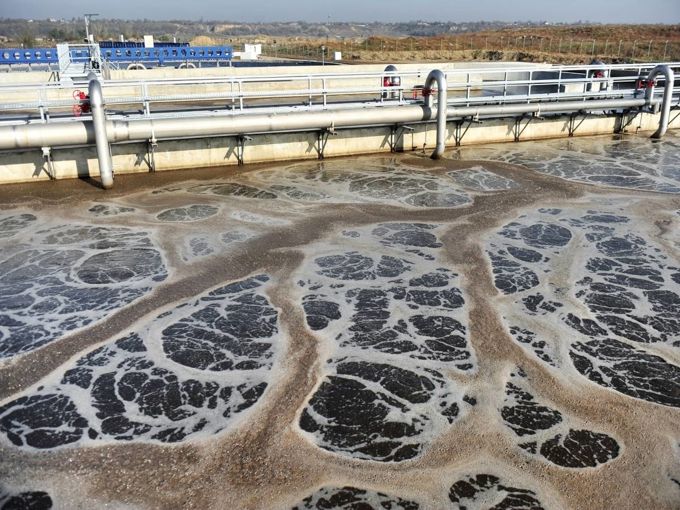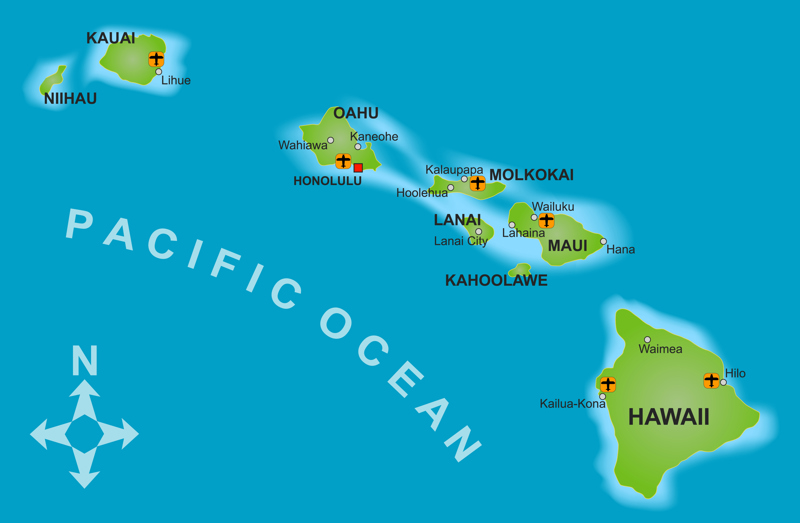
Supreme Court Watch: County Of Maui, Hawaii v. Hawaii Wildlife Fund
Hawaii Wildlife Fund's Environmental Citizen Suit
The County of Maui (Hawaii) operates a sewage treatment plant in the city of Wailuku on the island of Maui. Thing is, it is expensive to treat sewage to the point that the liquid stuff that comes out the end of the pipe is clean enough to be somewhat harmless. The natural human tendency is to avoid those costs but doing this means that nasty liquid stuff gets released from the plant. It is possible to do better. A sewage treatment plant in Virginia cleans the incoming sewage to the point that the liquid that comes out the end of the pipe is clean enough for people to drink. The Orange County Sanitation District in southern California is also doing this. The County of Maui, however, decided to take the low-cost approach but, instead of releasing the nasty stuff out in the open where people might see it and object, the County injected it deep underground where it migrated with the groundwater and (discretely) emptied into the Pacific Ocean. Imagine swimming on what is probably a breathtakingly beautiful shoreline at Wailuku on Maui, unaware that sewage tainted water could be lapping the beach.
Clean Water Act
You would think that the government would never let something like this go on for long. Wrong. Just like the free press serves a vital function in exposing government mismanagement and corruption, so too the Environmental Citizen Suit plays a vital role in holding polluters accountable when the environmental regulators can’t or won’t do it (here is a link to an article Jim Lang wrote that explains how the Environmental Citizen Suit operates). A non-profit group, the Hawaii Wildlife Fund, used the Environmental Citizen Suit provision in the Clean Water Act to sue the County of Maui.
The U.S. Supreme Court sided with the Hawaii Wildlife Fund and ruled that the County of Maui can’t keep sending the sewage into the ocean without getting a permit. Keep in mind, however, that the permit will be issued by the same regulators who failed in the first place to enforce the law against County of Maui (so we’ll see whether the permit has any real teeth, although Hawaii Wildlife Fund will be watching and could sue County of Maui again). Another thing about the Environmental Citizen Suit is that Hawaii Wildlife Fund can now recover its legal fees from County of Maui. After having resisted Hawaii Wildlife Fund at the U.S. District Court, the U.S. Court of Appeals, and now the U.S. Supreme Court, the County of Maui is probably looking at stroking a check payable to Hawaii Wildlife Fund in the range of $1M.
Effects of the United States Supreme Court Ruling
Because Virginia is our focus we do not usually blog about waterfront property law issues that arise in Hawaii unless, of course, the issue is one that is decided by the United States Supreme Court. On April 23, 2020, the United States Supreme Court ruled in a case that affects the ability of the Environmental Protection Agency (“EPA”) to regulate water pollution and the reach of the Clean Water Act. This ruling has controlling effect throughout the nation, including (of course) waterfront property owners in Virginia. It also concerns a sewage treatment plant. In County of Maui, Hawaii v. Hawaii Wildlife Fund et al. the sewage treatment plant was pumping roughly four million gallons of partially-treated sewage a day into deep wells. From there, testing showed that the sewage enters the groundwater where it travels about half-a-mile into the Pacific Ocean.

(Kaesler Media / Shutterstock.com)
The Clean Water Act prohibits “any addition” of any pollutant from “any point source” to “navigable waters” without a permit from the EPA. Environmental groups brought a citizen suit against the County of Maui alleging that their wastewater facility was violating this section of the law. The County argued that they were not violating the law because they were not directly adding a pollutant into a navigable water, as required by the plain language of the Act, but were instead pumping the pollutant deep underground where it had to pass through the groundwater to enter the ocean. The County contended that the word “from” in the phrase “from any point source” indicates that the Act is concerned with where pollution originates, not how it gets into the water. The groundwater, it stated, was the “conveyance,” not the wastewater facility, so no permit was necessary.
The County’s claim that it needed no permit (because the pollutantstraveled navigable waters by way of groundwater) was contrary to long standing precedent, to include the 2018 decision of the U.S. Court of Appeals for the Fourth Circuit in Sierra Club v. Virginia Electric & Power. However, a policy goal of the Trump administration is to relax environmental protections. Not surprisingly, the United States Solicitor General (appointed by the Trump administration) sided with the County, claiming that its interpretation was in line with a recently issued EPA Interpretive Statement from the Trump administration, which stated “all releases of pollutants to groundwater” are excluded from the scope of the permitting program, “even where pollutants are conveyed to jurisdictional surface waters via groundwater.” The EPA, in its recently issued Interpretive Statement, concluded that its newly developed interpretation followed the intent of Congress to have the States regulate their own groundwater.
Upholding the Clean Water Act In Supreme Court Ruling
The U.S. Supreme Court rejected these arguments, and the EPA’s interpretation, by a vote of 6-3. Writing for the majority, Justice Breyer stated that such a narrow reading would create a huge loophole violating the intent behind the Clean Water Act, which is to “‘restore and maintain the . . . integrity of the Nation’s waters.” Breyer said the EPA’s interpretation ignored the fact that the Clean Water Act specifically defined that wells could be a “point source,” and they generally flow into the groundwater. The language of the Act, Breyer continued, shows that Congress intended to require permitting of any identifiable source of pollution into navigable waters. He concluded that the best interpretation of the statute and the one most in line with congressional intent is that a permit is required when there is a discharge from a point source directly into navigable waters or when there is the functional equivalent of a direct discharge. The Court refused to define “functional equivalent of a direct discharge” other than to say many factors should be considered, including time and distance.
In making its decision, the Court also rejected the standard used by the Ninth Circuit that the Act required permitting of all pollution that was “fairly traceable” to a source. The Court noted that virtually all water, polluted or not, made its way to navigable waters over time. The Court pointed out that even a compost heap would, over the course of years, send some level of pollution into the ground that would eventually end up in navigable waters. The Court contended that this standard would give the EPA broader authority than intended by Congress and would undermine the authority of the States to regulate their own groundwater.
While the Supreme Court’s decision expands the authority of the EPA to regulate water pollution that enters navigable waters, it is difficult to know exactly how broad that authority is. The Court noted that the “functional equivalent” test is not a bright-line rule and that it will no doubt take further court cases and EPA guidance to establish just how far the EPA can reach. (Justice Alito, in his dissent, attacked the majority’s decision as creating a rule that cannot be applied consistently.) However, the Court also established that the EPA’s mandate does not extend as far as the Ninth Circuit’s “fairly traceable” test. Whatever the case, owners of water-adjacent property will have to exercise more caution in handling pollutants that may, indirectly, make their way to navigable waters.
Our Waterfront Law team has much experience handling environmental law cases, riparian property rights cases, and more. To learn more, contact us here.
